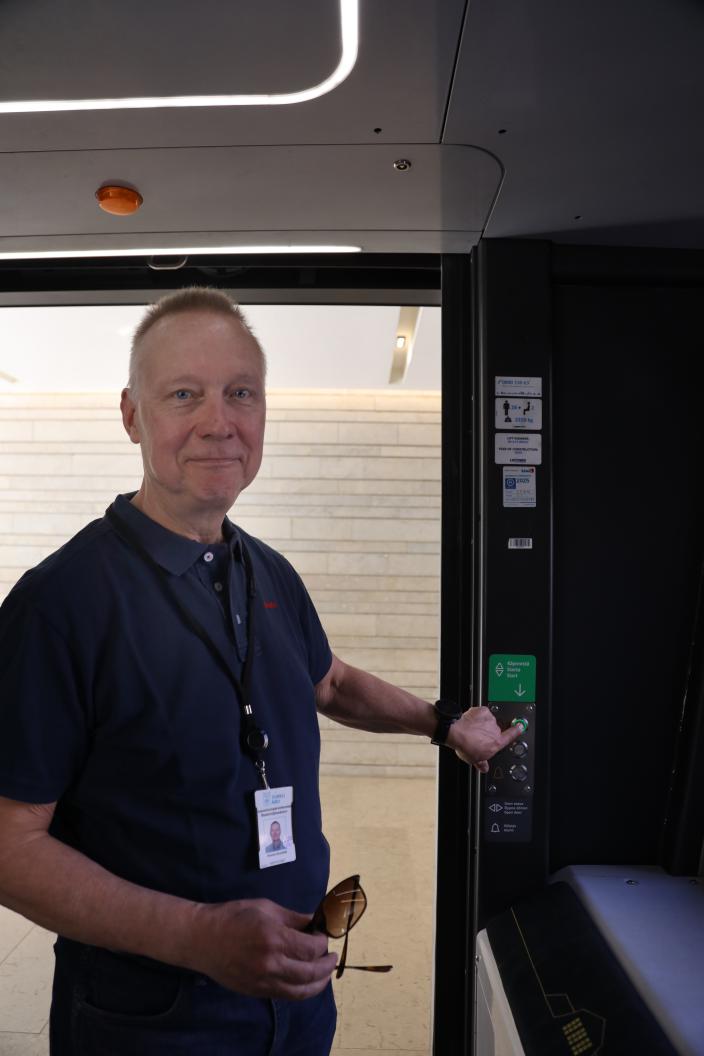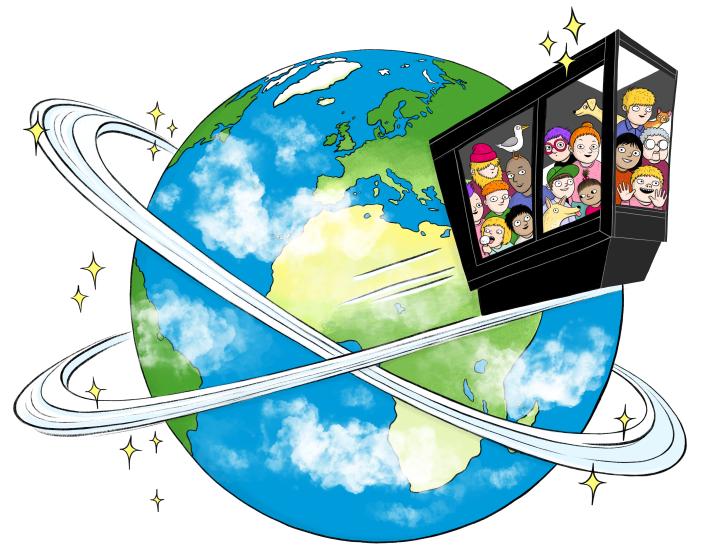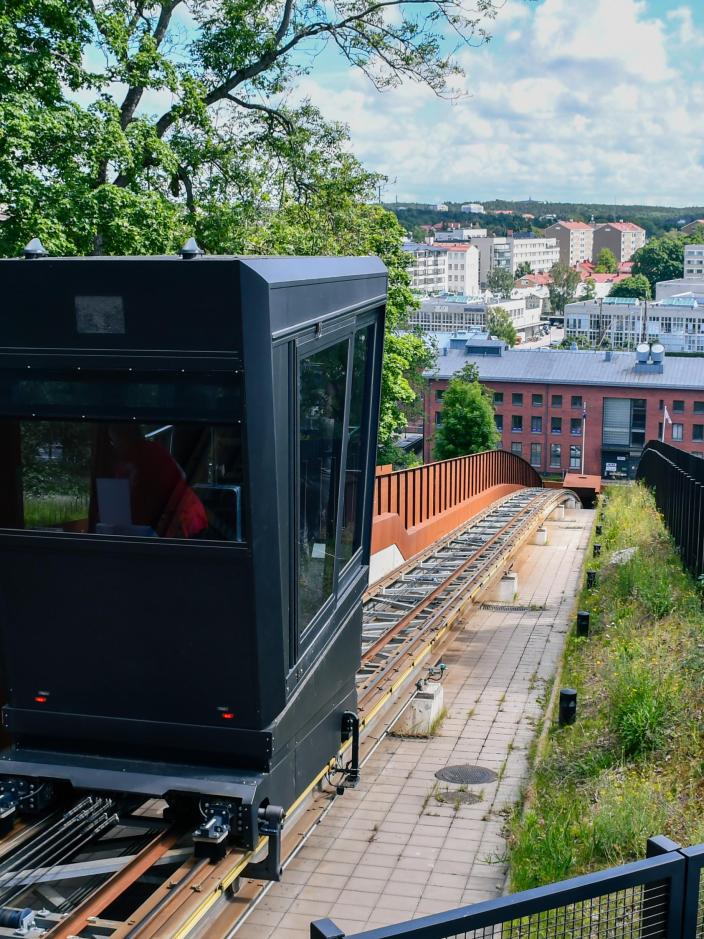The car almost never stops running. Builders, mothers pushing prams, old people, families. Some passengers take pictures. Even six years after opening.

Kimmo Suonpää, Manager of Urban Construction, arrives at the lower station a couple of minutes early. I have asked Kimmo for a ride to ask about what’s going on with the funicular.
The ride is smooth and sleepy. Arriving on the upper station, I ask him what he thinks about the device.
– Far better than what people say, says Kimmo.
To justify his response, he brings up the monitoring reports. Recently, there have been few disruptions apart from regular maintenance.
– The funicular is an excellent device for public transport, and free for users. It runs frequently on every day of the year. There’s only a short break at night. Other public transport can’t do that.
Public transport, that makes me think. I find that to me, the funicular is more of a tourist attraction.
– If you replaced it with a bus, the operating costs would skyrocket and the service level would plummet, continues Kimmo.
I ask him if a bus service is necessary.
– It’s a steep hill and lots of people live in Kakola. I think it’s a good idea to link Kakolanmäki Hill to the good bus routes on Linnankatu.
.
Text continues after video

The funicular’s passenger numbers don’t lie: there is a definite need for it. At the end of May, the car has travelled its 130-metre track 540,000 times, a total of 70,000 kilometres. My quick napkin maths says that’s got to be over a million passengers.
We walk around the hilltop. Despite how central the location is, it’s noticeably quiet. Kimmo presents the area’s infrastructure. We stop at the new Michailow Stairs. I take a few photos of the stairs and the embankment. Kimmo seems pleased with the work.
– We plan for the Kakola environment with respect for its value. For instance, the funicular stations are high-level architecture, considering they’re public transport stops.
I can’t help but point him to the untidy condition of Serpentiinitie, parallel to the funicular.
– There’s ongoing construction here and that traffic uses Serpentiinitie. We will be cleaning up the area after the construction sites are complete. It’s not worth it until then.
It’s Kimmo’s turn to ask a question: “Do you know why the funicular track is curved?”
I confess that I am not sure.
– The hill houses the wastewater treatment plan for the Turku region, which meant that we couldn’t excavate the rock in a way to make a straight track. I think it’s fantastic that we were able to build this track in such a demanding location and make it fit the landscape.
Text: Risto Lahtinen
Illustration: Minna Mäenpää
The article has been published in Finnish in Turkuposti 2, 2025.
